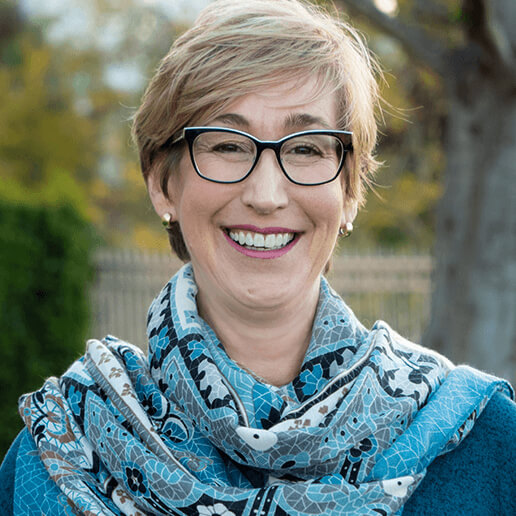

Self-leadership
SELF-LEADERSHIP HABITS and BEHAVIORS ARE VITAL for BUSINESS SUCCESS
SELF-LEADERSHIP MOVES CEOs and TEAM MEMBERS forward to ACHIEVE THEIR HIGHEST POTENTIAL
Self-Leadership is the key to your business success. Subsequently, as a company and a team develop, the all-important “people part” can be problematic. As humans, we are not robots and not one of us is perfect. Due to this, each person must learn how to successfully progress through ongoing challenges, changes, and interactions that disrupt their calm and effectiveness. Acknowledging their cause, then choosing to resolve reactive behaviors and major emotional discomfort on a variety of levels, demonstrates strong Self-Leadership.
The ‘people part” is the place to start. To grow in Self-Leadership, you need to have a willingness to recognize and resolve self-protective behaviors. Whatever title or position you hold in the company, being deliberate about learning more about “what you don’t know” or “haven’t experienced”—this is a first step toward demonstrating Self-Leadership.
At the same time, welcome the learning and stretching required to achieve the desired result for you and for your role within your company. Just like on the playing field, strive for higher levels of skill, security and confidence, transparency and teamwork, communication, critical thinking, endurance and self-control. All of these attributes (and more) are primary goals for people on teams, and the epitome of SELF-LEADERSHIP for every individual.
Become more self-aware: Within yourself, acknowledge who you are, your strengths and weaknesses, and your professional and personal goals; commit to growing in areas where you recognize that you can improve.
Clarify your functions in your role/position: Note that role clarity is a shared responsibility between the person creating the structure and the person actually performing the role; if unclear about your role and function, meet together to discuss, clarify and confirm.
Gain decision-making ability: Acquire necessary knowledge and skills to make conscious decisions; understand your role and purpose; accept or assign the tasks and functions that achieve the identified result/outcome.
Choose your influence and impact: Collaborate and innovate with other team members to meet goals and achieve big outcomes; appreciate how you contribute to the team and to sustained business success.
Demonstrate compassion toward yourself and to others: Show this through sincere expression of compassionate feelings through words and actions. Be a safe, trusted person.
Increase self-regulation and self-confidence: Through learning and applying the CCORETM Empowerment Process (see more below on this page), strive to develop and model, and make these behaviors a habit.
Expand emotional endurance: Navigate challenges and find the best way forward, as you dedicate yourself to the team during the ups and downs of business cycles.
Remain committed to defining and developing a business: Self-Leaders are proactive and accountable, striving to lead with compassion and authority. Choose to model responsible actions as you represent both the “business part” and the “people part” of your company.
These essentials go hand-in-hand…
CHOOSE to RESOLVE SELF-PROTECTION
as you DEVELOP SELF-LEADERSHIP
CCORE EMPOWERMENT PROCESS
SELF-PROTECTION is defined as the default habits and behaviors of fight, flight, flee or freeze that people automatically resort to, without thinking, when they feel stressed or threatened.
How do you begin to recognize
and resolve SELF-PROTECTION?
Leading Edge Teams’ “people part” of business is the foundation that long term company success rests upon. Learning how to recognize and resolve self-protective behaviors, some of which are lifelong habits, can take time. Remember this as you begin: gaining awareness about your self-protection is time well spent since it propels you to grow in Self-Leadership and in your personal life. You will become more effective, productive and confident. Then, as you discover more calm, job satisfaction and effectiveness, your ability to pinpoint opportunities for profit increase—along with so much more.
The CCORE EMPOWERMENT PROCESS
This inner process creates new behavioral habits, and is central to guiding a Self-Leaders response to challenging stimuli. Well-proven, it is a resource that many rely upon to help resolve self-protective thoughts, words, and actions.
Step-by-step, when you choose to commit to working our CCORE Empowerment process, your growth and development in Self-Leadership is realized by you and seen by others.
learning how to show up as your best self to promote safe, comfortable interactions with your team; another result is a positive impact on customers or clients.
engaging your secure self and becoming more outward (team) focused, neutral and curious, rather than being self-focused which causes you to seek power and control, separating you from others.
being able to release judgments you hold about yourself, others, or a situation, “letting go” of your stories, opinions, evaluations right/wrong or good/bad, predictions, and everything else you’ve attached to yourself, another person or a situation.
learning to clarify a situation to gain feelings of inner ease and freedom, security and compassion.
choosing to slow down and pause, so that you can shift out of an emotional reaction to anchor yourself on a business focus, which in-turn achieves the business outcome.
observing your thoughts and feelings; choosing to pause, to give time to move through emotional reactions; this helps you gain perspective by shifting into the “thinking” part of your brain, where you can control your thoughts, words and actions.
WHAT CAN THE CCORE EMPOWERMENT PROCESS DO FOR YOU?

The CCORETM EMPOWERMENT PROCESS raises your awareness to your default human wiring, which is great for saving you from immediate physical danger. However, the innate human protective defaults of fight, flight, flee or freeze, are not so great for the challenges you typically face in business. The CCORETM EMPOWERMENT PROCESS is an internal process that helps you recognize what self-protection looks like in yourself and in others. (Making the most of this process is not limited to your professional life, it benefits your personal life as well.)

The CCORE EMPOWERMENT PROCESS raises your awareness to your default human wiring, which is great for saving you from immediate physical danger. However, the innate human protective defaults of fight, flight, flee or freeze, are not so great for the challenges you typically face in business. The CCORE EMPOWERMENT PROCESS is an internal process that helps you recognize what self-protection looks like in yourself and in others. (Making the most of this process is not limited to your professional life, it benefits your personal life as well.)

It provides the steps to get out of your self-protective behaviors (the steps help you choose to replace reactive behaviors with non-reactive behaviors, that, as you go on, transform into positive behaviors that become automatic and an authentic part of you).

It reveals and resolves what triggered self-protection in the first place.
THE CCORE EMPOWERMENT PROCESS
GUIDES YOU
The CCORE EMPOWERMENT PROCESS guides you in how you can CHOOSE to show up as your best self. It’s step-by-step, which when done with consistent practice, becomes reliable Self-Leadership habits put into action. These establish safe and trustworthy behaviors in your interactions with others, and build your reputation as a Self-Leader and A+ Team Member.
How self-protection shows up
Overwhelm — Feeling powerless to impact change.
Blaming — It’s someone else’s fault.
Denial — Justify the behavior; refuse to talk about it; blame others.
Judgment — Finding fault; being critical, condemning, nit picking.
Defensiveness and rationalization — Not accepting fault; shifts fault to other person.
Resist or Ignore — Avoidance; the problem will pass me by.
Manipulate — Effort to win people over; emotionally driven rather than fact-driven.
Story-telling — Making up all kinds of things to cover up or distract from the real issue.


LEARN to CHOOSE DIFFERENTLY
Appreciate the Power of the Pause: Choose to give time and space to calm down emotions; recognize you are in a self-protective place… (walk, sing, garden, watch TV, etc.).
Consider how you can CHOOSE to Resolve Feelings of Self-Protection: This has a learning curve, like anything new, but over time it gets easier, and is the way to assure you are choosing your better self when you respond. Later, you will feel good about the steps you chose to take. (You were not emotionally reactive.)
CLARIFY the Situation: What is really happening? Clarify just the facts (not what you imagine or are emotionally feeling).
CHOOSE YOUR IMPACT and HOW YOU SHOW UP: Where can you be a positive influence? Who do you want to be? What is your leadership reputation you want to build?
Show up in a way that gives a chance to resolve the situation. Have enough inner strength to not allow self-protective emotions (one or more of a long list of reactions) to show up.
Show up to listen. Encourage candid communication: “I see” – “share with me” – “tell me what’s going on” – “we can work together” – “let’s figure this out”…
OBSERVE THOUGHTS and FEELINGS: You can’t turn off emotions. You don’t get rid of your feelings, yet in this process they don’t control you. You look and acknowledge what you’re thinking and feeling, the things that trigger emotional reactive behaviors, but you choose to not let them drive your choices.
RELEASE emotionally triggered JUDGMENT to COMPASSION: This is where the heavy lifting is, and this is your way to Self-Leadership. Become neutral and calm in a situation. With thought to all of the previous steps of the process, release all the judgments you may feel until you feel compassion naturally arise in you. Remind yourself that you do not have a crystal ball to know everything. The intent is not to bypass the problem, however the goal is to be able to focus on a solution. Compassion is evident when the problem doesn’t feel as gigantic, and you feel that you have gotten to a comfortable, calm place that allows new ideas to come forth; creative and critical thinking now have space to come forward to solve the problem. Remember, moments that feel like a breakdown can be a breakthrough!
ENGAGE your secure self. Claim your secure self when faced with an issue or problem, by not emotionally over-thinking about yourself. Guard against emotional reaction/self-protection that causes you to become polarized as a villain or victim. Self-Leaders handle interactions in such a way that their “bigger self,” shows up—and that is their secure, best self!

Learn how to use the CCORE EMPOWERMENT PROCESS to bring you into SELF-LEADERSHIP
” You don’t have to hold a certain position in order to be a leader. No matter what your title is, you can be a leader. Do what is right, work for the greater good, and show others how to do it, too. This is what makes you a leader, not the title or position you hold.”
Henry Ford


